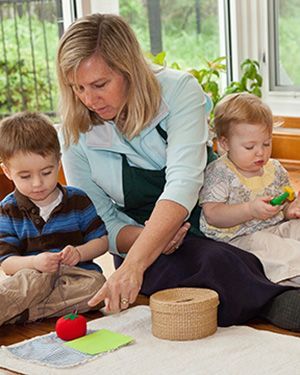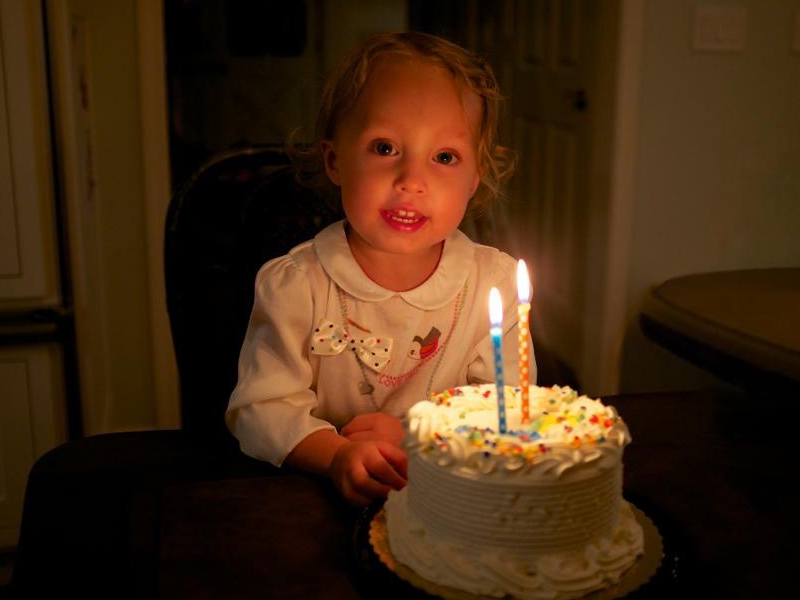
Montessori Training and the Mindset it Cultivates
Parenting with grace can be a challenge at times. We explore how parents can apply lessons from Montessori teacher training to child rearing at home.
“The first step…is to prepare [yourself]” – Maria Montessori, The Absorbent Mind
In 1913, Dr. Montessori gave a series of lectures to train teachers in her first formal training course in Rome. Ninety men and women came from around the world to enroll in this year-long course. Imagine what they must have sacrificed, traveling so far in those days on rough seas, in carriages or early vehicles over uneven roads, leaving their families and careers to come hear what this woman had to say! It was just this kind of willingness and openness that Dr. Montessori declared was necessary in those who wish to work with children. If we are going to truly embrace the idea that our role as adults is to serve children’s natural drive to form themselves, we must be humble, astute, and courteous. We must be ready to learn from observing the children, how to best help each one in their quests.
This is why the Association Montessori Internationale (AMI) training courses are so long (three summers long or a calendar school year of nine months) and involve rigorous work and examinations for teachers-to-be. To become a fully-trained Montessori teacher, one is not just acquiring the mechanics of the method: the lessons, materials’ uses, and philosophy. To adopt a new way of thinking--which this approach requires--means that a personal transformation takes place. A person must depart from the traditional, limited beliefs of what children are like and what to do with them. There is an openness, a willingness, and a courage that those first trainees had and that we need to exercise.
It takes time, experiences and practice to change one’s approach and beliefs. A new Montessori teacher watches the children, determines from her training what to show them next, and adjusts based on what she sees in the students’ behaviors. For instance, I remember as a Primary teacher inviting a three-year-old to bring three sandpaper letters, one at a time, to a table to work on them with me. He brought the first, looking around the room as he walked, distracted and excitable, dropped it on the table, and rushed back for the next one. I finished up what I was doing with a different child and turned to smile at him as he approached with the next letter clutched in his hands, again looking around and this time talking to another child as he passed. “Peter,” I stopped him by holding my hands out to gently accept the sandpaper letter /j/, “let’s see how softly we can place the /j/ on the table.” I withdrew my hands as I saw he seized the opportunity to show me himself. “Lovely,” I whispered, “I wonder about the /m/.” And he rushed back to look through the box for that letter. He was still excited, still distracted, but gradually, as I drew his attention towards his movements and the letters, he started to settle into himself and focus.
Our lesson with the three letters that day was more about the movements, even as we practiced the sounds together. I introduced one new letter--instead of the three new ones I had planned to--because I saw that Peter wasn’t ready that day to absorb the new information. In fact, he forgot one of the letters from the previous day several times, so that review became a big part of our lesson, too. Another day, when he settled into work more quickly, we would have time to make strides with more letters. This is how we adjust to meet each child where he or she is at every moment, and we watch the responses we get as we try different things. We actually cover more ground, and do so with deeper and more thorough learning, than if we wed ourselves to an arbitrary timetable for a curriculum.
Parenting with Grace: What We Can Learn from Montessori
This same sensitivity and flexibility can help us as parents. Recently, we had a Coffee Discussion for the Forest Bluff mothers who have three or more children under the age of seven. After sharing some stories, frustrations, worries, and laughter, three “veteran” Forest Bluff mothers responded with their insights from their own experiences of raising several children close in age. Now that their children are in their teens and twenties, these mothers could look back, recall the struggles, and share what had helped them most. One of the biggest take-aways was to pick and choose one’s priorities and let go of some goals that might not be as important in the grand scheme of things. We also heard the call to be graceful; all three mothers said in so many words: It just won’t be perfect, but it will all turn out all right. Accept this and act with grace as best you can.
How can we be graceful when children are screaming, chaos reigns around you in the kitchen, and your own nerves are shot?
Like a teacher in her classroom, we must begin with ourselves. Quite literally, take a step back and observe the children for a moment. Then be the leader. Calmly and confidently step in to guide the children, one at a time, towards something positive. Be as gentle or as firm as each child needs you to be. Every one of them is different, and they are different on each day. But in any moment, when a child is acting chaotically, s/he either needs to be removed from too much stimulus or given the opportunity to be actively involved in her/his own project. It could be as simple as being invited to wipe the tabletop, prepare simple food, or move furniture or belongings from one part of the room to another.
If a child shows s/he is exhausted or overstimulated, it helps to lift them up caringly and hold them while you help the others get started on what they can be doing, then put them in another room or area to quietly look at a book or play alone for a little bit. Setting boundaries and consistently upholding them gives children the structure that they will set for themselves more often as they mature. I know children as young as four who will sometimes announce, “I need some time alone now,” and walk out of the room to care for themselves!
As adults, we need to fill our own spiritual wells weekly with some activity or practice that rejuvenates us. This differs for everybody, but we all need it. We also can do this throughout the day. As a Montessori teacher, I prepared the classroom in the morning and then stood quietly, waiting for the first children to arrive. Sometimes I listened to the classical music quietly playing in the corner. I looked out the large windows at the trees and sky and took deeps breaths to relax so that I could be fully present for each child. I got myself ready, like putting on my own oxygen mask before helping others.
When teaching, I was always so busy I couldn’t believe how fast the day was moving. But as we set up our lunches and sat down at the tables to eat, I used this as another opportunity for calming. I encouraged the children to slow down and move carefully, perhaps played some quiet classical music again, and modeled for the children my own slow motions and calm attitude. I smiled and whispered in response when the children spoke to me, and they quieted down in turn. After lunch in the Elementary rooms is a reading period, when the teacher and all the children read their chosen books quietly for pleasure. At every level, there are these checkpoints throughout the day, and honestly, with the hustle-bustle of working with 20 to 25 children all day long, I do not know how I could have stayed with them all day without these moments of re-centering. I believe the children benefit from taking moments to re-center as well.
In our homes, when we are with our young children all day long, it is imperative to weave in such moments. Checking our phones constantly (I’m guilty, too), answering calls and emails (I’m guilty, too), and racing off to an errand or to stuff more into the day (I’m guilty, too) are big obstacles to creating a home life that fosters creative, reflective thought and inner-stillness: qualities that prepare our children for optimal learning. Our children are much more vulnerable to the distractions and overstimulation of our modern lifestyles than we are. So, preparing ourselves to be sensitive to their needs and observant of their behaviors is more important than ever. Just as the Montessori Directress prepares herself to be the kind of adult who can support and foster the children’s healthiest growth, we as parents need to take the time to prepare. And give yourself time for change to happen; just as it takes the teacher in training months of learning to change herself, this is an ongoing process and a continuing journey in parenting, too. Prepare yourself with grace!


